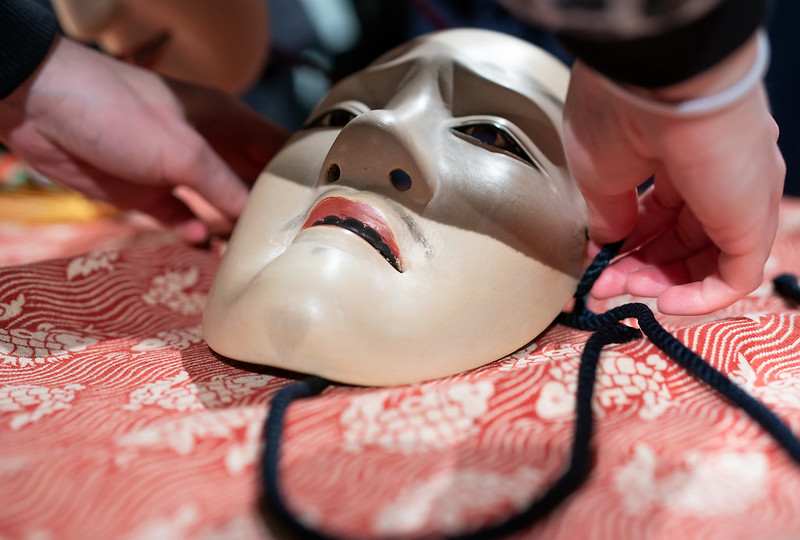
Noh: Japan’s Oldest Traditional Theater
Noh or Nogaku (“talent,” “skill”) is the oldest traditional form of Japanese musical drama, performed since the 1300s. A Noh performance combines drama, dance, poetry, and music. Noh actors were usually all male and wore masks. All-day performances consisted of five Noh plays plus the shorter, comical kyōgen plays. Now, Noh is usually composed of one kyōgen play between two Noh plays.
Noh performances are codified using the iemoto system, which is a Japanese term that refers to the founder of a Japanese school of traditional art. Noh evolved from folk art forms such as Dengaku and Shirabyoshi.
Noh performance.
Noh was initially performed only for the Japanese aristocracy. During the Muromachi Period (1336-1573), Zeami Motokiyo and his father Kan’ami, both actors and playwrights, established the Noh theater of today. It became a popular form of entertainment for all social classes during the Edo Period. Noh has greatly influenced other theater performance forms such as Kabuki.
Noh combines elements of Shinto, Buddhism, and minimalism that have been refined through generations. Noh performers rehearse as a group only once before the start of the show. Otherwise, they practice individually with the assistance of a senior school member. A performance does not rely on just one actor, but rather on how they interact and connect as a whole during the show itself. It follows the aesthetics of transience embodied in the saying, “one chance, one meeting.”
Japanese Noh Mask.
The Noh plays are identified by theme and categorized into five types:
Kami mono – a mythic story that depicts the worship of a particular deity. The first act portrays a human who transitions into a deity in the second act.
Shura mono – a warrior play with a shite, or main character, as a ghost in the first act. He becomes a warrior wearing full battle gear and depicting his death scene in the second act.
Katsura mono – a women’s play where the shite is a female persona. It showcases the most sophisticated dances and songs of Noh theater.
Kyōran mono (madness plays), Onryō mono (vengeful ghost plays), and other miscellaneous plays – there are about 94 kinds of plays that cannot be categorized.
Ori mono (demon plays) and kiri mono (final plays) – the shite performs as demons or goblins in bright colors. Usually tense and fast-paced.
The National Noh Theater of Tokyo (in Sendagaya, Shibuya-ku) stages Noh plays about 16 performance usually lasts 6 hours. English-speaking audiences are given a one-page explanation of the plot.
Check out this Noh preformance:


